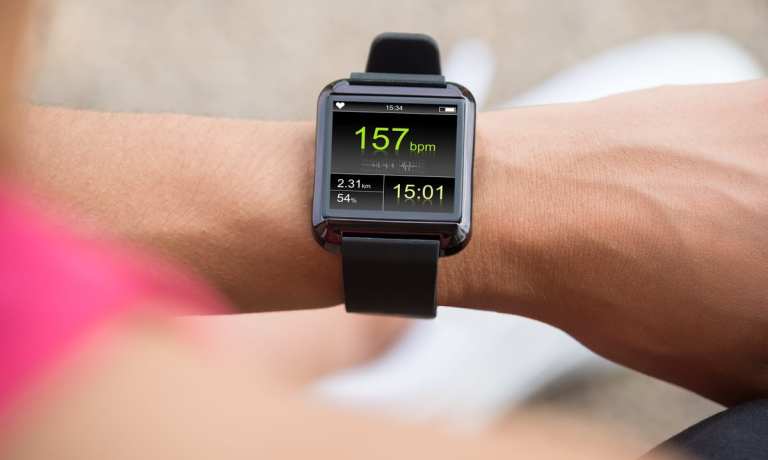Whether you want to track your run times, monitor your sleep or try to avoid a sunburn, the market for wearable technology is growing and evolving as companies large and small try to cash in on one of the holiday season’s hottest segments.
By some estimates, the wearables market is currently worth about $70 billion annually, a huge total sales figure. However, that actually implies a temporary stall in year-on-year growth due to COVID-related manufacturing disruptions during the second quarter that momentarily limited supplies of some products.
Longer term, however, the wearables industry’s rising trajectory remains solidly intact. Forecasts call for double-digit percentage growth for years to come, driven by an array of new products from a range of new mass-market companies looking to take on early entrants such as Apple and Fitbit.
To see what is arguably the “prime” battleground in the escalating wearables war, you need look no further than Amazon.
True to form, the online giant is currently offering deeply discounted Echo Buds and Halos to not only entice fitness-minded holiday shoppers, but also get a jump on the perennial surge in New Year’s health kicks that start in January.
But Will They Wear It?
Advertisement: Scroll to Continue
Aggressive pricing of new versions of proven, mature product categories is the norm in the tech industry, where obsolescence occurs perhaps more quickly than in any other sector.
As a result, the pace of innovation is also unmatched as companies aim to keep the wearables product pipeline full. That requires industry players to not only invent things that never existed before, but to then convince people that a new product is something they can’t live without.
“Wearable devices and services will evolve together in the coming quarters,” said Ramon Llamas, research director of devices at International Data Corp. (IDC).
He called wearables “the perfect device” to collect data, then merge it with actionable guidance and services using corresponding apps. “Together, they offer the user a virtual coach to make better decisions and achieve their goals,” Llamas said.
Perfect For Who?
Wearable tech may not be for everyone, but for those inclined to digitally analyze their personal well-being, they offer an unprecedented level of diagnostics that would not have been available outside a doctor’s office previously.
In some cases, new iterations of wearable tech emerge that are simply “too far out there” for the mainstream or push the boundaries of acceptable fashion. For example, the $1,500 Google Glass, launched in 2013, stands as a well-known example of early wearable tech that the public was simply not ready for either financially or fashion-wise.
To be fair, Google Glass still exists but the product is now being marketed toward commercial users, which happens to be another potentially massive market within the broader wearables segment.
For example, when Amazon launched the Halo in August, technophiles took note of the device’s new use of 3D imaging to give people a better weight calculation than the one dimensional BMI.
Amazon also highlighted the fact that the Halo offered groundbreaking listening technology that “uses machine learning to analyze energy and positivity in a customer’s voice.”
Ultimately, consumers will decide what level of tech feels right for them, but in the meantime, the gadget makers will surely continue to push the state-of-the-art boundaries.
The COVID-19 Angle
Like so many aspects of our lives that have been reshaped by the pandemic, the present infatuation with fever as an early warning of COVID-19 has sparked both demand and innovation within the wearables sector. Or at least it’s amended marketing strategies.
For example, why walk around with a thermometer in your mouth or a clunky bracelet on your wrist when you could wear a small, subtle device that automatically tracks your body temperature?
Enter the Oura Ring, a wedding-band clone that comes in silver, gold or diamond and can track the user’s sleep, heart rate and body temperature. It’s already being endorsed by NBA players, race-car drivers and UFC fighters.
“The first day, I wouldn’t say I was symptomatic, I just felt off. I woke up in the morning and my ‘Readiness’ was 68 even though I had slept 10 hours,” an Oura endorsement by “Renee” reads. “By that night I realized I had a fever but Oura actually picked up that something was off with my body temperature about 24 hours before I did. That night my [heart-rate variability] dropped and my respiration rate shot up to 21 bpm. Just to see that spike made me start to really question what was going on.”
Next Up: Wearables Connected To Clothes, Shoes And Skin
Meanwhile, the newest frontier for wearables involves sensors sewn directly into clothing, embedded into sneakers or even stuck to the skin.
For instance, a Clarkson University research team is perfecting an inexpensive UV-responsive sensor consumers can put on their skin that alerts users when they’ve gotten too much sun.
“When the [sensor’s] titanium is activated by UV light, like from the sun, the dye degrades and changes color, indicating exposure,” said Professor Silvana Andreescu, chair of Clarkson’s chemistry and biomolecular science department. The research comes at a time when 1.7 million Americans are diagnosed with skin cancers each year.
Other studies are underway to use wearable sensors in ambulances en route to hospitals to give medical workers data (and a potential life-saving jump-start) on treating patients.
Innovations Are Just Beginning
While there will surely be plenty of product flops and miscalculations in the trial-and-error world of wearables, it’s clear that the big tech companies are onboard with investing heavily to identify the next big thing in the sector.
“Device makers are also laying the groundwork that will allow consumers to use multiple wearables in conjunction with each other,” said Jitesh Ubrani, research manager for IDC Mobile Device Trackers. “That’s a powerful new experience that can bring added utility to consumers and vendors alike.”
Read More On Retail:




